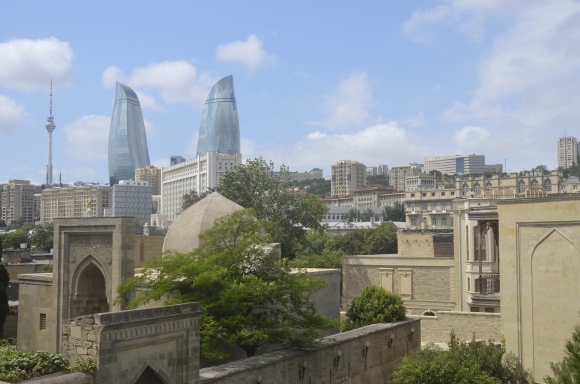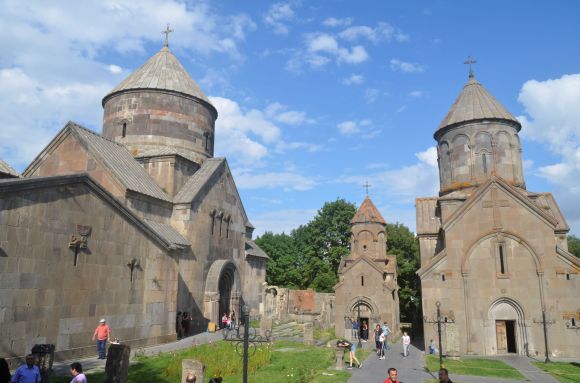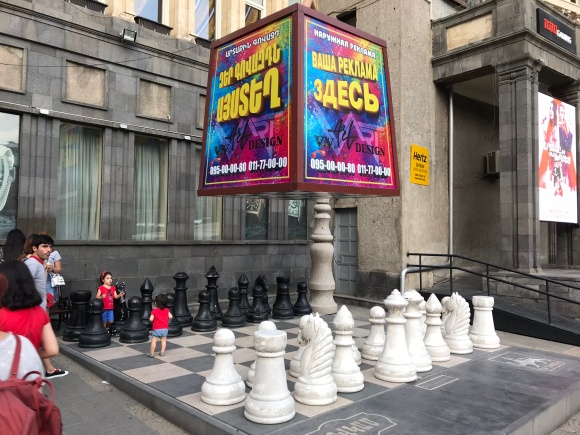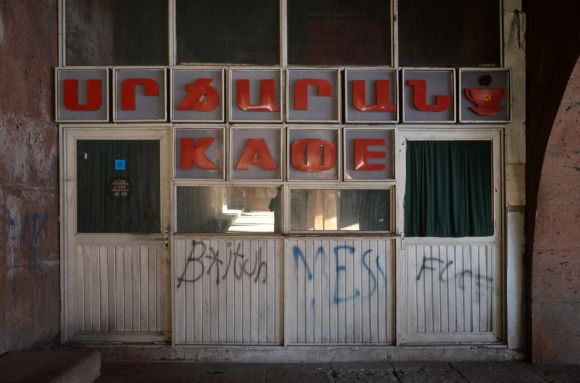Here’s an overview of the various places in Azerbaijan, Georgia and Armenia. I realise most travel blogs don’t give an overview like this and instead jump into the details of where to visit within each city, what currency they use etc. To me, these are secondary. What’s more important in the first place is for travellers to at least know what this region is about before planning whether to visit these 3 countries the first place, and subsequently, they can zoom into planning which cities/regions to visit.
Azerbaijan (Baku only)
- An interesting mix of 21st-century, Turkish, Persian and European architecture
- Day trips to natural, historical and archaeological sites

Georgia
- Wine
- Mountains & hiking
- Monasteries & cathedrals
- Georgian cuisine
- Socialist Modernist architecture

The Kazbeg mountains, with Mount Kazbegi in the background
Armenia
- Monasteries & cathedrals
- Wine
- Cognac (although I didn’t try it)
- Yerevan’s pre and post-World War II urban layout

Watch out for my next post for an overview of the individual cities I visited in these 3 republics!
Visa requirements
But before going into the details of each of these countries, I should probably highlight that Singapore passport holders don’t need visas for Georgia and Armenia. We only need to apply for an eVisa for Azerbaijan online beforehand (and it doesn’t have to be months in advance!) for USD 24, and it would be issued via email in a few working days. No need for a letter of invitation or going to the embassy.
All these are correct as of Aug 2018 when I travelled there. As visa regulations are subject to changes, please check on the countries’ respective Ministries of Foreign Affairs before you travel.
Costs of travelling
The costs of living in these 3 countries are similarly low, although it felt like Yerevan was very slightly cheaper than the cities in the 2 other countries (despite the metro costing just slllightly more than the other 2 capital cities – see below).
As a comparison to the other Central or Eastern European countries which I’ve been to, I would say that in terms of travelling expenditure, South Caucasus is:
- comparable to Ukraine, Belarus and Moldova, or slightly more expensive than them
- slightly cheaper than Romania, Bulgaria and former Yugoslav countries except for Croatia and Slovenia (which I believe are more expensive but I haven’t been there)
- somewhat less expensive than Poland
- significantly less expensive than Russia (Moscow & St Petersburg), Czech Republic, Slovakia, Hungary, Estonia or Latvia
For example, a metro ride in the 3 capital cities costs the following:
- Baku: 0,20 manat / SGD 0.16 / EUR 0,10
- Tbilisi: 0,50 lari / SGD 0.26 / EUR 0,17
- Yerevan: 100 drams / SGD 0.28 / EUR 0,18
Crime rates
Crime rates are generally very low in all 3 countries. I didn’t face any problems at all as a solo traveller with an Asian appearance, carrying a DSLR. At night, it felt quite safe as well, although I tried not to avoid walking along empty streets. Of course, general safety precautions should be taken.
Languages
The only official languages of each of these countries are Azerbaijani, Georgian and Armenian respectively. I think most of the young people speak English, and quite a lot of the older staff in restaurants speak English too, even in smaller towns.
Most signboards are in the official languages and English. Most of the menus in restaurants in Azerbaijan and Armenia are in the respective official languages, English and Russian, while most of the menus in Georgia are in Georgian and English, so there’s no need to worry about not understanding them!
The presence of the Russian language
Since these 3 republics were part of the Soviet Union, the Russian language is still present to different extents. I have learnt some Russian before, and it was very useful, because many of my conversations with people I met and taxi drivers were fully in Russian, and it did help me get to my destinations more quickly. By observation, the presence of the Russian language is the strongest in Armenia, where many shop signboards are in both Armenian and Russian, and the packaging of some of the products in supermarkets might be only in Russian (because these products are imported from Russia).


